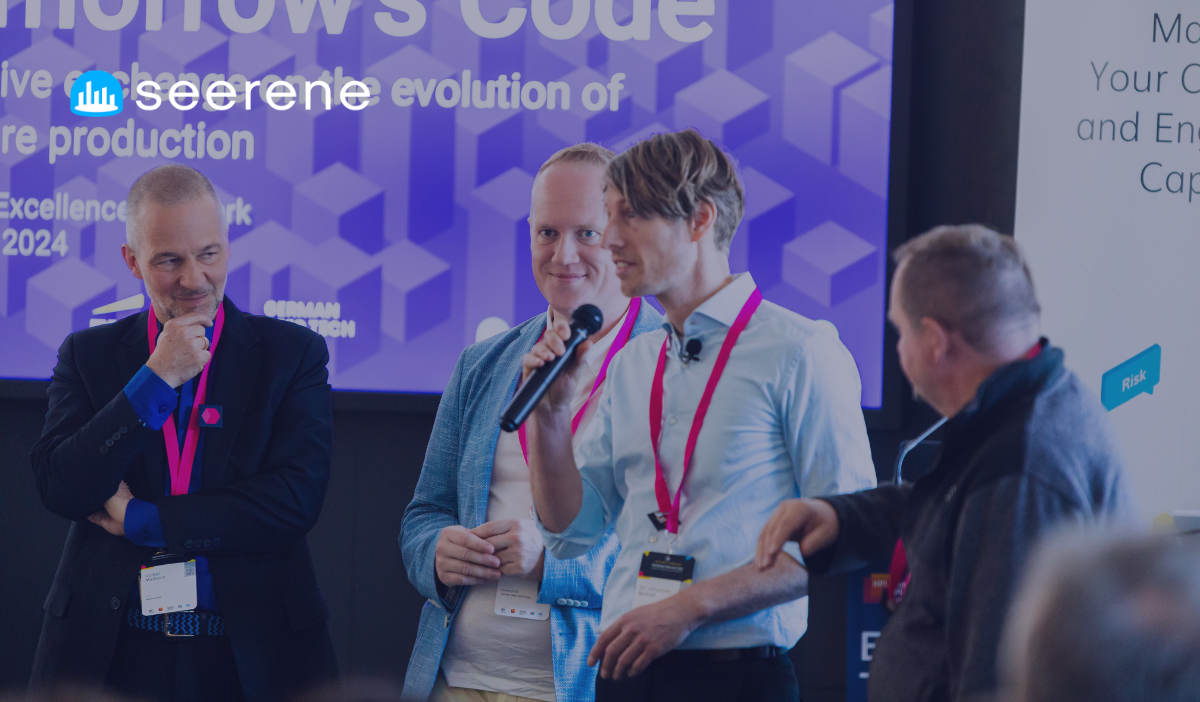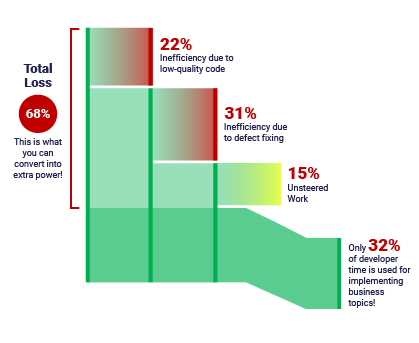
In an era where technological advancements redefine industries at an unprecedented pace, Dr. Johannes Bohnet, CEO and founder of Seerene, shared a compelling vision of the future of software production during his presentation at the Envisioning Tomorrow’s Code executive exchange. Hosted by the Hasso Plattner Institute, Seerene, MaibornWolff, the German Deep Tech Group, and EY, the conference spotlighted the transformative potential of generative AI in software development. Bohnet’s exploration of the past, present, and future of software engineering offered both a nuanced perspective and a rallying call for innovation.
Dr. Bohnet’s narrative began with a historical perspective on software development. In its early days, software creation was akin to manually constructing a house stone by stone. This process, relying heavily on specialized knowledge of algorithms and programming languages like C and C++, demanded significant effort and expertise.
By the early 2000s, the development landscape shifted. Open-source frameworks and libraries became the foundation of software production, reducing the need for raw coding expertise. Developers transitioned into roles that required deep familiarity with these reusable components. As Bohnet illustrated in his slides, today’s development processes remain largely manual but leverage prefabricated "building blocks," such as TCP networking libraries or image processing frameworks, for faster and more efficient production.
Generative AI marks the next frontier. Tools like ChatGPT and GitHub Copilot now act as virtual architects, assembling software components based on a developer’s specifications. Bohnet likened this to using a robotic 3D printer for constructing houses: developers describe what they want, and the AI "prints" a functional solution.
Bohnet cautioned that while generative AI can dramatically boost productivity, it also introduces risks. As outlined in his presentation slides, studies show that developers using AI tools can produce up to three times more code per week. However, this acceleration comes at a cost:
To balance these risks, Bohnet recommended proactive measures, including the implementation of automated testing and governance systems to oversee AI-generated outputs.
While the house-building metaphor applies well to routine software solutions—like static websites or HR tools—Bohnet argued that most software projects are far more complex. His slides underscored this distinction, pointing out that innovative software, such as embedded systems in IoT devices or bespoke digital twins, often lacks clear requirements at the outset.
In such cases, software development becomes an iterative process of discovery, where user feedback and evolving business needs shape the end product. This constant evolution is what sets software apart from traditional manufacturing, where specifications are defined and finalized before production begins.
Central to Bohnet’s presentation was the role of Seerene’s analytics platform in enabling organizations to navigate the complexities of modern software development. By analyzing data from code repositories, ticketing systems, and other development tools, Seerene provides actionable insights into developer productivity, code quality, and technical debt.
One striking example from his slides showed how only 32% of developer time is typically spent on creating business value. The remaining time is lost to inefficiencies, such as working with poor-quality code or fixing defects. Bohnet emphasized that addressing these inefficiencies could unlock significant value for organizations.

Dr. Bohnet’s vision for the future positions generative AI as an assistant rather than a replacement for developers. While AI excels at automating routine tasks, it lacks the contextual understanding required for complex, innovative projects. Developers, therefore, must shift from being code producers to strategic overseers who guide AI-generated outputs and ensure architectural integrity.
To harness the benefits of generative AI while mitigating its risks, Bohnet offered the following recommendations, supported by data and visuals from his presentation:
Dr. Bohnet’s presentation underscored the transformative potential of generative AI in reshaping software development. However, as his slides and insights revealed, this transformation is not without its challenges. Organizations must adopt a thoughtful, data-driven approach to leverage AI responsibly and sustainably.
By balancing innovation with governance, companies can unlock unprecedented efficiencies and deliver software systems that not only meet today’s needs but also evolve with tomorrow’s demands.
For those looking to lead in this new era, the message is clear: embrace AI as a tool for amplification, not replacement—and prepare to build the foundations of the future.
This article provides a journalistic summary of the ideas shared by Dr. Johannes Bohnet during his presentation. While we’ve highlighted the key concepts and innovations he discussed, the full depth of his insights and examples can only be appreciated by watching the complete session. If you’re intrigued by these ideas and want to hear them explained directly by the speaker, we encourage you to watch the full video of his presentation. If you have any questions or concerns, we encourage you to contact us directly.
These Stories on Events/Webinars
August-Bebel-Str. 26-53
14482 Potsdam, Germany
hello@seerene.com
+49 (0) 331 706 234 0
Generative AI Seerene GmbH
August-Bebel-Str. 26-53
14482 Potsdam, Germany
hello@seerene.com
+49 331 7062340